Are tech companies leading the charge for environmental friendliness or just playing games?
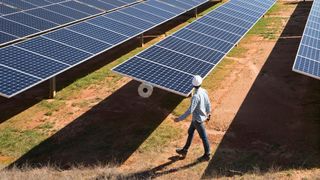
Companies like Apple spend a lot of time, resources, and money each year to go green and make sure that everyone knows it. While great strides have been made, more is needed to better protect the environment for future generations to enjoy. The next steps are challenging ones as the low-hanging goals and objectives have largely been met.
While we are going to cover Apple, we're also highlighting other companies, including Samsung, Google, Microsoft, and Facebook.
Apple
In its 2019 Environmental Responsibility Report, the company said its "bold mission" is to make products without "taking" from the Earth. To do so, it has implemented a plan that addresses three key points: climate change, resources, and smarter chemistry.
The first of these have mostly been successful, at least in one sizable area. Beginning in 2012, Apple promised to shift to 100% renewable clean energy for its operations. By 2013, it was using 100% renewable energy to power its data centers. The rest of Apple's operations switched over in 2016.
To further address climate change, Apple has now moved to transitioning product materials, manufacturing processes, and operating systems to low-carbon alternatives. It's also pushing to lower energy use across the board.
In terms of resources, the company is reducing its freshwater use and moving towards zero waste. Sometime in the future, it wants to use only renewable or recycled materials for its products.
Meanwhile, smarter chemistry has involved looking at the supply chain and creating an inventory of chemicals used to make its products. As part of the ongoing process, Apple's also accessing and managing the risks these chemicals may cause to human health and the environment. The ongoing goal is to transition to safer chemicals.
Master your iPhone in minutes
iMore offers spot-on advice and guidance from our team of experts, with decades of Apple device experience to lean on. Learn more with iMore!
How's Apple doing?
Apple's environmental record is a sound one, although challenges remain.
In 2018, the last year on record, Apple saw energy use drop by 70%. There was also a 35% reduction in the company's overall carbon footprint, compared to 2015. Resource-wise, both the MacBook Air and Mac mini now use 100% recycled aluminum enclosures. Further, retail packaging now uses 100% responsibly-sourced wood fiber.
Better still, 100% of Apple suppliers have now adopted safer cleaners and degreasers in final assembly sites. Nearly 75% of the chemical composition data by mass for all new iPhone, iPad, and Mac product has now been inventoried. All products are now free of mercury, brominated flame retardants, PVC, phthalates, beryllium, lead in the solder, and arsenic in display glasses.
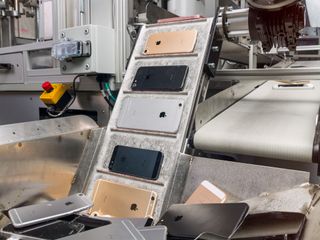
As Quartz rightly noted in December 2019, Apple's company-owned data centers and office buildings only make up around 25% of its overall operations. The rest includes its third-party supply chain that's mostly overseas.
Over the last few years, Apple has either strongly encouraged its suppliers to switch to energy providers focused on renewables or co-invest to build them. This remains a work in progress, and it will be interesting to see how things change over time.
Beyond this, there are two other environmental areas where Apple is struggling, waste, and mining.
In 2018, the company sent 36.5 million pounds, or 18,250 tons, of waste to landfills. Just six years early, it sent just over 4.8 million pounds of waste to landfills. Three years ago, that number stood at 13 million pounds.
Hazardous waste, which can't get dumped in a landfill, is also a growing problem. In 2018, the company produced 6.3 million pounds of dangerous materials versus around 1 million pounds three years earlier. The 2018 number was a 50% increase year-over-year.
The bottom line is that Apple makes millions of devices each year, and current recycling processes aren't enough to replace the raw materials needed to make our favorite products.
The increased waste is mostly attributed to the increased sales of iPhones between 2012 and 2018. The change, which has been good for the company's bottom line, has also lead to more mining. Increased mining inevitably leads to more deforestation and habitat destruction. Labor challenges are also heightened.
In 2017, Apple said it wanted to eliminate mining "one day." It's a noble goal, but one that probably won't see the light of day anytime soon.
According to a 2019 report, of the 118 elements on the Earth, 75 are required to make an iPhone. To begin pivoting away from raw materials, Apple has stepped up to use recycled materials from dead devices. Manufacturing scrap is also being considered for use in new devices.
The bottom line, however, is that Apple makes millions of devices each year, and current recycling processes aren't enough to replace the raw materials needed to make our favorite products, unfortunately.
Other companies
Other tech companies have found similar challenges as they've moved at becoming more green. Some have been more successful than others.
Samsung
Back in 2017, Greenpeace looked at the environmental impact of 17 of the world's leading consumer electronics companies. The Guide to Greener Electronics report, which ranked Apple only slightly behind Fairphone for the No. 1 position, wasn't kind to Samsung, the world's largest manufacturer of smartphones.
According to the report, only 1% of Samsung's operations used renewable energy. Greenpeace also criticized the company for not phasing out of the use of PVC and BFRs from their products, even though it committed to doing so in 2009.
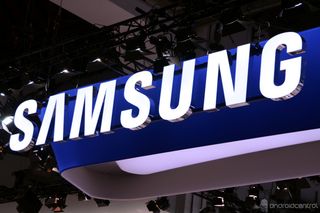
Greenpeace also notes that Samsung is one of the least transparent companies there is when it comes to environmental reporting. Nearly three years after that report was published, the situation remains the same.
Samsung's 2019 sustainably report, like its previous publications, is short on specifics and full of generalizations. And, although its environmental goals are admirable, they have completion dates well into the future that make them suspect, at best.
Despite this, Samsung deserves praise for pushing programs that encourage environmental activism among the youth and its employees. That could go a long way in convincing more people to live a greener life.
Like Apple, Google has long embraced renewable energy across its many data centers and office buildings around the world. It also heavily promotes steps everyday citizens can take to improve the Earth. Saving energy is also an essential component in the company's ongoing sustainability efforts.
The company's latest environmental report provides an excellent snapshot of what the company has been doing and where it plans on going in the first half of the 2020s.
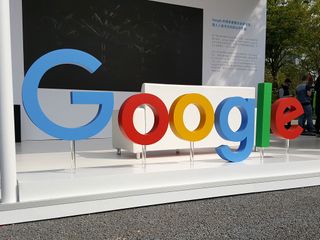
Google has among the most environmentally-friendly data centers in the world, claiming they are nearly two times as efficient as centers at other companies. It's also promoting products that make the world a better place, such as its Nest thermostats lineup.
The company is also promoting "healthy materials made from safe chemistry." And, like Apple, it only offers products free of PVC and BFRs.
Microsoft
Like other tech companies, the Windows maker has a far-reaching environmental sustainability program in place. It's one that focuses on carbon, water, waste, and ecosystems. Already carbon neutral, Microsoft hopes to be carbon negative within 10 years. By becoming carbon negative, the company hopes to remove more carbon than it emits each year.
But it gets better. By 2050, Microsoft hopes to have removed all of the carbon the company has directly emitted since the company's founding in 1975. Yes, this is a big deal and fantastic news for the planet, assuming the goal is met in the next 30 years.
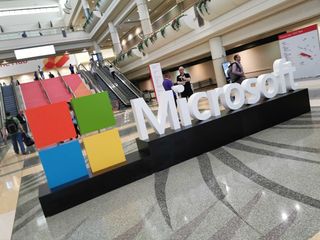
From a product development perspective, Microsoft is taking positive steps that were lacking just a few years ago.
For example, as of 2019, the company has seen its packaging recyclability increase to more than 80%. It has also certified that 825,000 Xbox consoles are carbon neutral. Many of its other products, including its Surface tablets, now offer an ecodesign. The company is also addressing water usage, mining, and e-waste, according to its latest report on sustainability.
Because it only offers a few physical products, Facebook's environmental impact is primarily determined by how it designs and maintains its data centers. Interestingly enough, the social network is still not using 100% renewal energy at these facilities, although it hopes to complete that goal before the end of this year. However, the Facebook work centers do use 100% renewable energy, however, and have been for many years.

According to the company, it has seen improvements in water usage and efficiency in recent years. Facebook's annual emissions have also seen a definite drop during the past five years.
Beyond this, the company says it's employing a data-driven approach to identify and build on its environmental programs. In doing so, it hopes to make its carbon footprint even smaller, while maximizing energy usage.
Summary
Most of the surveys released over the years have strongly rated Apple and Google above the rest when it comes to environmental sustainability. Samsung, by contrast, has received less stellar marks, although much of this could be attributed to the South Korean company's historical lack of transparency. It's also the only company on the list that isn't American-owned, which could also be a factor in terms of publishing timely information.
Despite this, every company deserves significant kudos for implementing policies that better protect the environment. The biggest challenge moving forward, especially for mobile device manufacturers, is how to keep supplying millions of new handsets per year without destroying the Earth. That's a challenge without a firm answer, although there's been a movement in the right direction for everyone.

Bryan M. Wolfe has written about technology for over a decade on various websites, including TechRadar, AppAdvice, and many more. Before this, he worked in the technology field across different industries, including healthcare and education. He’s currently iMore’s lead on all things Mac and macOS, although he also loves covering iPhone, iPad, and Apple Watch. Bryan enjoys watching his favorite sports teams, traveling, and driving around his teenage daughter to her latest stage show, audition, or school event in his spare time. He also keeps busy walking his black and white cocker spaniel, Izzy, and trying new coffees and liquid grapes.
Most Popular



